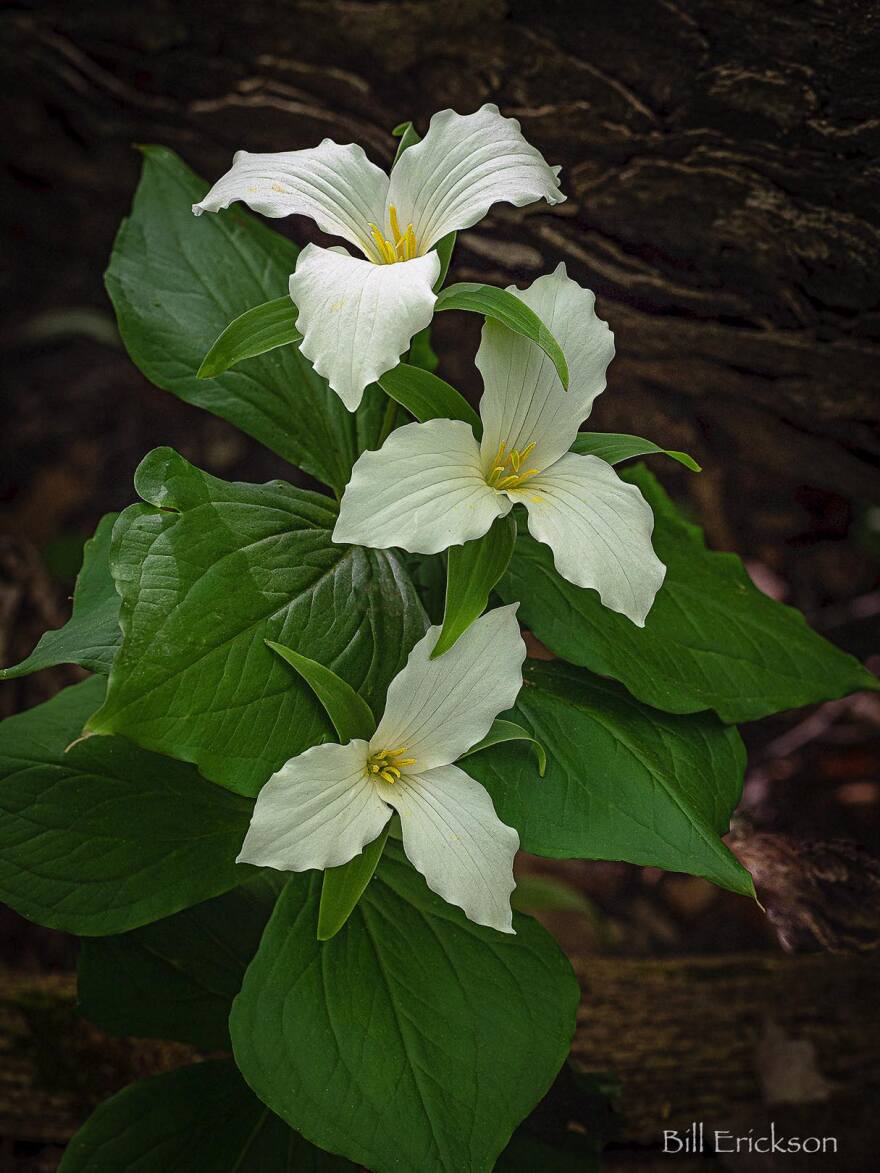It’s morel season again and foragers are heading out into the woods to pick these short-lived mushrooms. Trilliums are still on display in woodlands, too, along with other late-blooming white flowers. Read on to learn more!
MORELS
You might not imagine morel hunting changing much year to year, but Aaron Grenchick, a local forager with more than 45 years of experience, says otherwise.
When Aaron was a teenager, hunting for morels was simple.
“You [could] go from ash tree to ash tree, elm tree to elm tree, and eight out of ten of those trees would have a ring of morel mushrooms around them,” he says.
But around 15 years ago, he started noticing a change in the landscape — trees were dying, and fast.
The culprit was the emerald ash borer, an invasive species that looks like a bright green grasshopper. It was first discovered in Michigan in 2002.
“You know, if I would have known our ash trees were going to be devastated. I probably wouldn't have believed it,” Aaron says.
Ash trees provided a favorite habitat for morel mushrooms, but with so many gone, mushroom hunters are now more likely to find them near other sources of nourishment, like the quaking aspen.
The morel’s relationship with surrounding trees is not well understood. While some morel species appear to have a symbiotic relationship with trees, others appear saprotrophic, meaning they feed off dead organic material.

If you’re looking for a location to hunt morels this season, you’d be lucky to find anyone who’d give away their secret spot, but we can give you some tips. Look where forests were burned the year before; Michigan’s Department of Natural Resources has a map that shows last year’s fires of greater than 10 acres.
Morels also like the habitat of apple orchards, but it’s best to steer clear of them. Many old orchards used lead arsenate as a form of insecticide until at least the late 1940s. Morels foraged from these areas may have toxic levels of lead and arsenic.
TRIILLIUMS
You can still see trilliums in woodlands throughout northern Michigan. This time of year, they’re often found in the company of other white flowers, like Canada mayflower, foam flower and cut-leaf toothwort.

But the credit for trilliums' spread throughout northern Michigan forests goes to a special group of gardeners: ants.
Ants distribute trillium seeds, which have a little appendage full of fat. Fat is hard to find in the woods, and ants need it, so they carry the trillium seeds to their underground nests. They eat the fat and disperse the seeds underground, where they can germinate away from rodents and other animals that might eat them.
So while we admire the showy flowers, we should appreciate ants. But if you're out looking at trilliums, be careful not to step on a fawn!
The white flowers dotting the forest floor are perfect camouflage for white-spotted fawns born around this time.
And if you do see a fawn quietly lying alone amidst the foliage, don’t panic! They haven't been abandoned. Does will leave their fawns for as long as 12 hours before returning to nurse them. When the humans are gone, the does will return.
WATCH FOR ...
Local asparagus is up and available at roadside stands and in markets. The season usually lasts about six weeks. But like everything else about our Michigan spring, it’s weather dependent.
Whippoorwills are out and singing, too.
Let us know what you’re seeing! Send your photos of northern Michigan flora and fauna to ipr@interlochen.org. Put "Audio Guide to Spring" in the subject line.
More from IPR's Red Pine Radio:
Want more news from northern Michigan? Subscribe to IPR 's newsletters!





